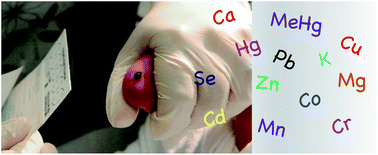A critical review of the analysis of dried blood spots for characterizing human exposure to inorganic targets using methods based on analytical atomic spectrometry
Abstract
Dried blood spots (DBS) are well established in clinical laboratory medicine and are used to screen newborn babies for a large number of metabolomic disorders. More than 50 years ago, early attempts to analyze DBS for Pb content identified several major limitations, which continued to be reported on for decades, including the unknown volume of blood deposited, the tendency of red blood cells to accumulate at the periphery of the spot and contamination errors. The historical literature on DBS blood Pb measurement is replete with competing claims for success as well as reports on the limitations for screening and diagnostic purposes. The range of spectroscopic techniques used to measure Pb in DBS includes atomic absorption spectrometry and inorganic mass spectrometry. There is a broad consensus that the analysis of archived DBS samples from newborn screening programs suffers from sporadic background contamination for many elements, the magnitude of which makes such samples unreliable for biomonitoring studies. Yet, the introduction of inorganic mass spectrometry into clinical laboratories provides the potential for multielement analysis of DBS. For some elements that are present at relatively high concentrations, such as Ca, Cs, Cu, Fe, K, Mg, Na, P, Rb, S and Zn, reasonable data may be feasible on archived DBS that are stored appropriately. However, for biomonitoring studies, analysis of DBS for many trace elements is fraught with contamination errors, inadequate limits of detection and a lack of well validated field-based studies. This is particularly true for Pb, Cd and Hg, for which only crude screening for acutely elevated levels can be useful. But for other elements such as Cu, Zn, Se, there may well be some value in using prospectively collected DBS to obtain population-based data. More recent developments with volumetric absorptive devices and microfluidic devices address some of the limitations inherent in DBS analysis and hold more promise for achieving reliable measurements of elemental content, but more work is needed to characterize background contamination, especially under real-world field conditions. In conjunction with well established capillary blood collection devices, these new technologies may provide better approaches to obtaining reliable environmental exposure information in the future for prospectively collected samples in population-based studies.



 Please wait while we load your content...
Please wait while we load your content...